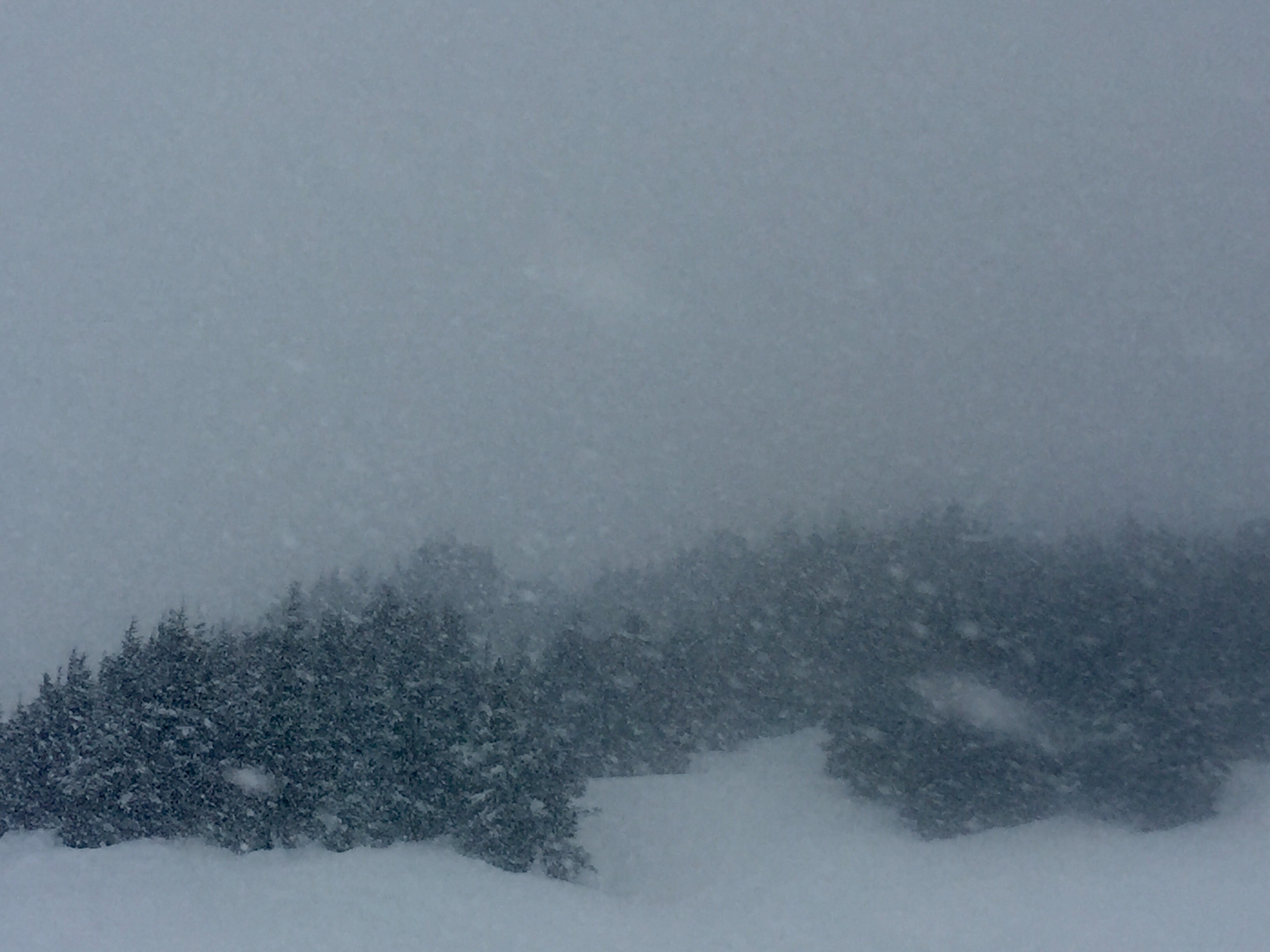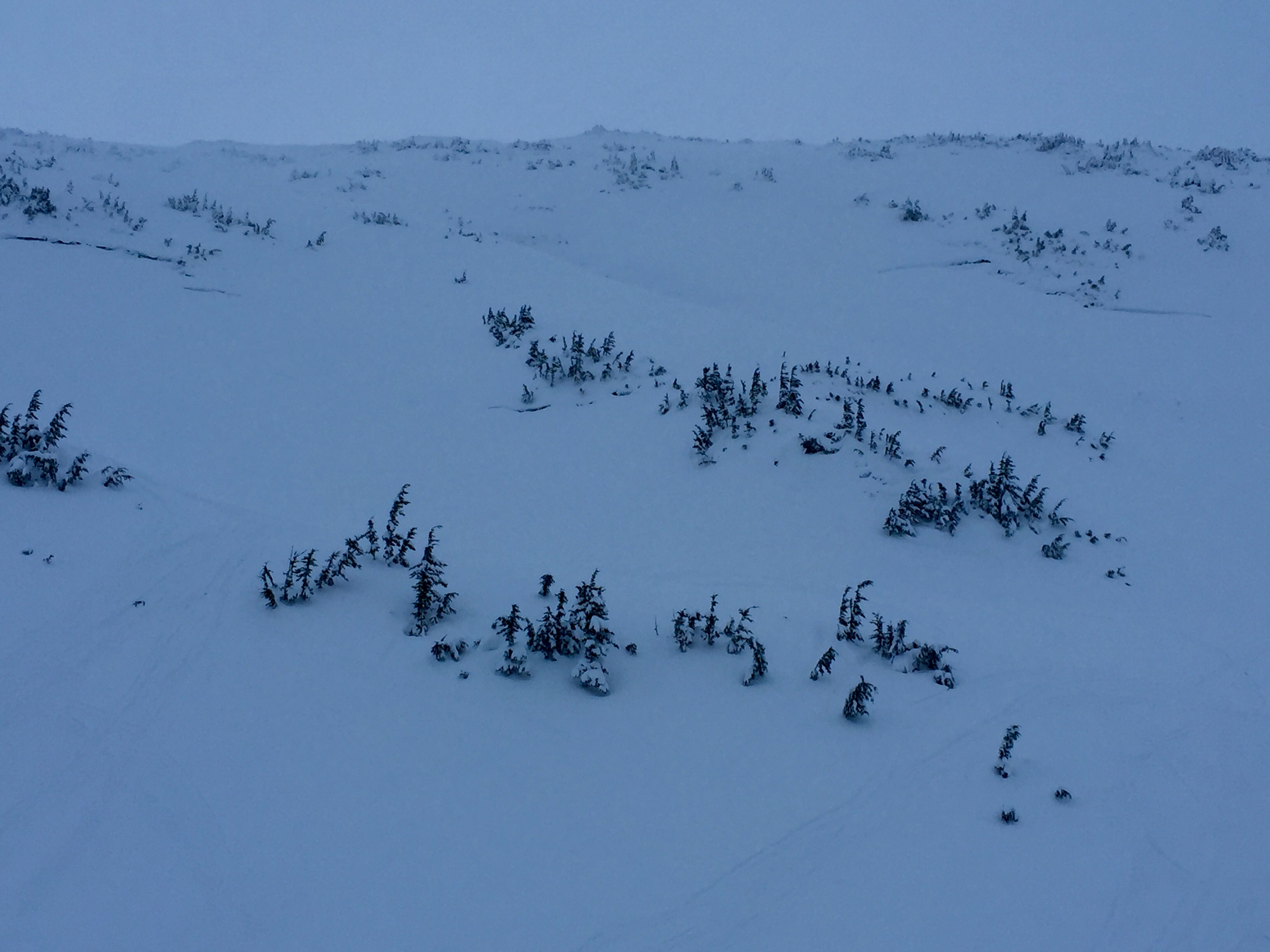Turnagain Pass
|
|
The avalanche danger is MODERATE at and above treeline today where fresh wind slabs have formed yesterday afternoon/ overnight with the approach of a quick but intense burst of heavy snow and moderate easterly winds. These will be possible for a person to trigger, specifically in steep, wind-loaded terrain above treeline. Wind slabs are expected to be in the 12-18 € range. In the mid-elevation band (at treeline), glide cracks continue to pose a significant threat. Limiting or avoiding your time spent under glide cracks will be your best bet to mitigate this particular avalanche problem.


